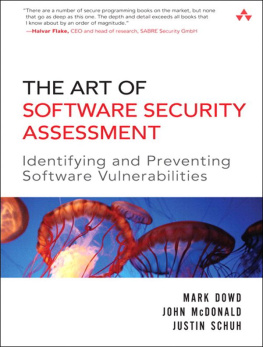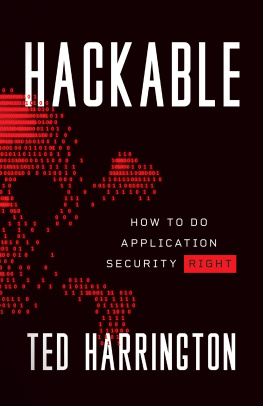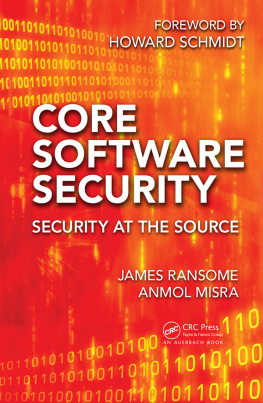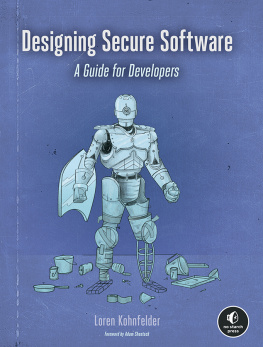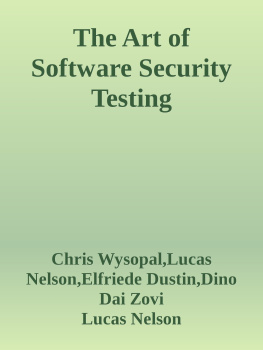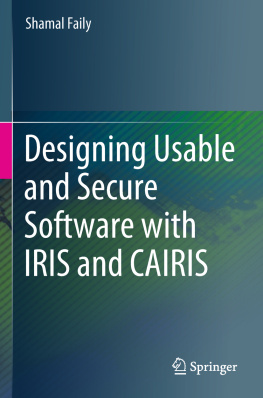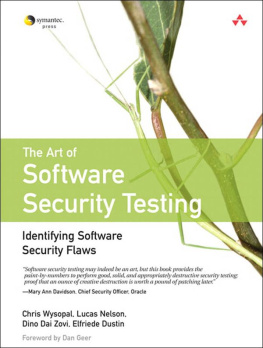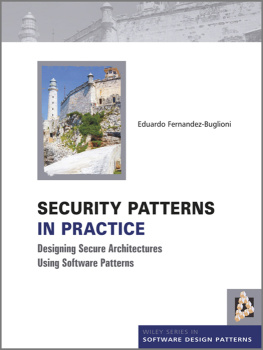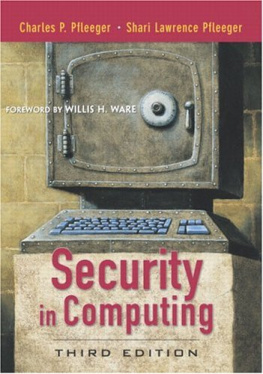Mark Dowd - The Art of Software Security Assessment: Identifying and Preventing Software Vulnerabilities
Here you can read online Mark Dowd - The Art of Software Security Assessment: Identifying and Preventing Software Vulnerabilities full text of the book (entire story) in english for free. Download pdf and epub, get meaning, cover and reviews about this ebook. year: 2006, publisher: Addison-Wesley Professional, genre: Computer. Description of the work, (preface) as well as reviews are available. Best literature library LitArk.com created for fans of good reading and offers a wide selection of genres:
Romance novel
Science fiction
Adventure
Detective
Science
History
Home and family
Prose
Art
Politics
Computer
Non-fiction
Religion
Business
Children
Humor
Choose a favorite category and find really read worthwhile books. Enjoy immersion in the world of imagination, feel the emotions of the characters or learn something new for yourself, make an fascinating discovery.
- Book:The Art of Software Security Assessment: Identifying and Preventing Software Vulnerabilities
- Author:
- Publisher:Addison-Wesley Professional
- Genre:
- Year:2006
- Rating:4 / 5
- Favourites:Add to favourites
- Your mark:
The Art of Software Security Assessment: Identifying and Preventing Software Vulnerabilities: summary, description and annotation
We offer to read an annotation, description, summary or preface (depends on what the author of the book "The Art of Software Security Assessment: Identifying and Preventing Software Vulnerabilities" wrote himself). If you haven't found the necessary information about the book — write in the comments, we will try to find it.
There are a number of secure programming books on the market, but none that go as deep as this one. The depth and detail exceeds all books that I know about by an order of magnitude.
Halvar Flake, CEO and head of research, SABRE Security GmbH
The Definitive Insiders Guide to Auditing Software Security
This is one of the most detailed, sophisticated, and useful guides to software security auditing ever written. The authors are leading security consultants and researchers who have personally uncovered vulnerabilities in applications ranging from sendmail to Microsoft Exchange, Check Point VPN to Internet Explorer. Drawing on their extraordinary experience, they introduce a start-to-finish methodology for ripping apart applications to reveal even the most subtle and well-hidden security flaws.
The Art of Software Security Assessment covers the full spectrum of software vulnerabilities in both UNIX/Linux and Windows environments. It demonstrates how to audit security in applications of all sizes and functions, including network and Web software. Moreover, it teaches using extensive examples of real code drawn from past flaws in many of the industrys highest-profile applications.
Coverage includes
Code auditing: theory, practice, proven methodologies, and secrets of the trade
Bridging the gap between secure software design and post-implementation review
Performing architectural assessment: design review, threat modeling, and operational review
Identifying vulnerabilities related to memory management, data types, and malformed data
UNIX/Linux assessment: privileges, files, and processes
Windows-specific issues, including objects and the filesystem
Auditing interprocess communication, synchronization, and state
Evaluating network software: IP stacks, firewalls, and common application protocols
Auditing Web applications and technologies
This book is an unprecedented resource for everyone who must deliver secure software or assure the safety of existing software: consultants, security specialists, developers, QA staff, testers, and administrators alike.
Contents
ABOUT THE AUTHORS xv
PREFACE xvii
ACKNOWLEDGMENTS xxi
I Introduction to Software Security Assessment
1 SOFTWARE VULNERABILITY FUNDAMENTALS 3
2 DESIGN REVIEW 25
3 OPERATIONAL REVIEW 67
4 APPLICATION REVIEW PROCESS 91
II Software Vulnerabilities
5 MEMORY CORRUPTION 167
6 C LANGUAGE ISSUES 203
7 PROGRAM BUILDING BLOCKS 297
8 STRINGS ANDMETACHARACTERS 387
9 UNIX I: PRIVILEGES AND FILES 459
10 UNIX II: PROCESSES 559
11 WINDOWS I: OBJECTS AND THE FILE SYSTEM 625
12 WINDOWS II: INTERPROCESS COMMUNICATION 685
13 SYNCHRONIZATION AND STATE 755
III Software Vulnerabilities in Practice
14 NETWORK PROTOCOLS 829
15 FIREWALLS 891
16 NETWORK APPLICATION PROTOCOLS 921
17 WEB APPLICATIONS 1007
18 WEB TECHNOLOGIES 1083
BIBLIOGRAPHY 1125
INDEX 1129
Mark Dowd: author's other books
Who wrote The Art of Software Security Assessment: Identifying and Preventing Software Vulnerabilities? Find out the surname, the name of the author of the book and a list of all author's works by series.

